Trees Birds Mammals Fish Amphibians Reptiles
Wild Algarve
Bookshop
Panus conchatus (Bull.) Fr. - Lilac Oysterling
Phylum: Basidiomycota - Class: Agaricomycetes - Order: Polyporales - Family: Polyporaceae
Distribution - Taxonomic History - Etymology - Identification - Culinary Notes - Reference Sources
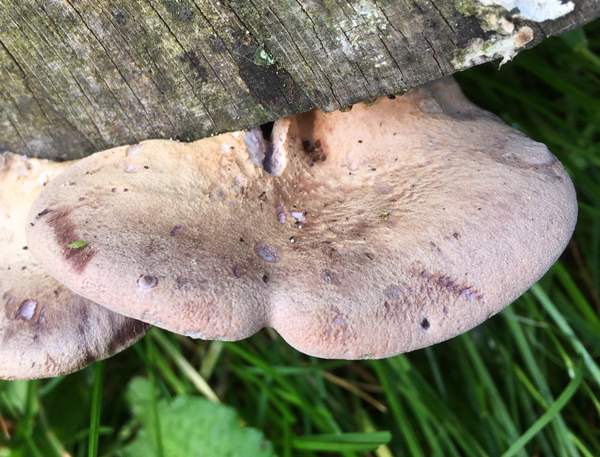
Panus is a small genus of tough wood-rotting fungi whose fruitbodies are usually purple tinged when young and fresh; they grow rather like oyster mushrooms or Split Gill fungi, with a very short eccentric stem, wavy margins, and shallowish gills that fork.
Distribution
Panus conchatus occurs on dead deciduous hardwood in northern and central Europe. This species is also recorded in parts of North America.
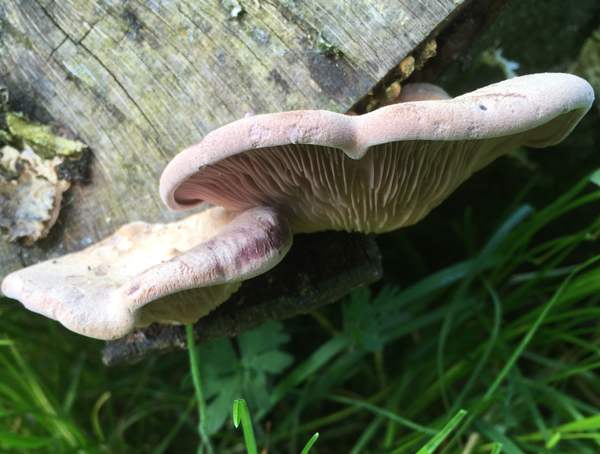
Taxonomic history
Despite having gills, fungi in the genus Panus are now thought to be much more closely related to the Polypores than to the Agaricales - another example of parallel evolution. (Oyster mushrooms of the Pleurotus genus are, in contrast, - Classified in the order Agaricales.) French mycologist Jean Baptiste Francois (Pierre) Bulliard described and named this species in 1787, giving it the scientific name Agaricus conchatus.
Synonyms of Panus conchatus include Agaricus conchatus (Bull.), Lentinus torulosus (Pers.) Lloyd, Panus torulosus (Pers.) Fr., and Lentinus conchatus (Bull.) J. Schrot.
Etymology
Panus, the genus name, probably comes from Greek and means a swelling or tumour (a growth, therefore). The specific epithet conchatus comes from Latin and means 'shell-like'.
Identification guide
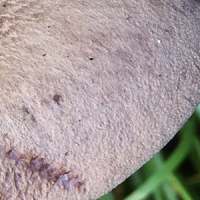 |
Cap
Usually semi-circular or oyster-shaped, caps are 5 to 15cm across, developing wavy inrolled margins; dry; smooth or very finely downy; reddish to purplish-brown when young, fading to tan with age.
Stem
Nearly always eccentrically attached, 2-5 cm longand 1.5-3 cm across; paler than the cap; downy or finely hairy when young. |
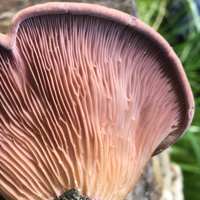 |
Gills
Crowded, forking, pale mauve or pale purple when young and fresh, turning paler and later browning with age; decurrent to the stem. |
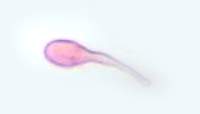 |
Pleurocystidia
Inflated towards tip (clavate) or more centrally (ventricose); occasionally capitate, 35-45 x 8-11µm. Cheilocystidia are similar.
|
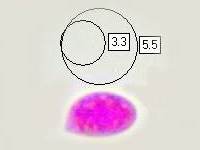 |
Spores
Ellipsoidal, smooth, 5-7 x 2.5-3.5µm; inamyloid.
Spore print
White or very pale yellow. |
Odour/taste |
Not distinctive. |
Habitat & Ecological role |
Restricted to dead wood, mainly hardwoods but occasionally conifers - usually on fallen
trunks and branches, particularly oaks. |
Season |
Autumn. |
Similar species |
Panrus rudis is similar but fuzzy rather than scaly, and its spores are slightly shorter and broader (a lower Q value); it is found in southern European countries. |
Culinary Notes
This species is not generally considered edible, and we have no information about whether it contains toxins.
Reference Sources
Fascinated by Fungi, 2nd Edition, Pat O'Reilly 2016, reprinted by Coch-y-bonddu Books in 2022.
Dictionary of the Fungi; Paul M. Kirk, Paul F. Cannon, David W. Minter and J. A. Stalpers; CABI, 2008
Taxonomic history and synonym information on these pages is drawn from many sources but in particular from the British Mycological Society's GB Checklist of Fungi.
Acknowledgements
This page includes pictures kindly contributed by Simon Harding.
Top of page...
Fascinated by Fungi. Back by popular demand, Pat O'Reilly's best-selling 450-page hardback book is available now. The latest second edition was republished with a sparkling new cover design in September 2022 by Coch-y-Bonddu Books. Full details and copies are available from the publisher's online bookshop...